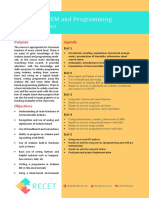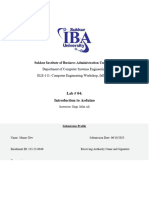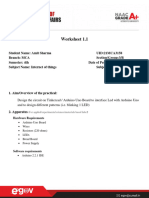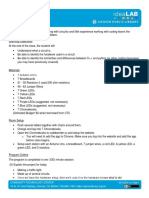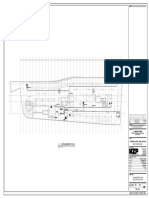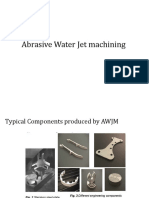Course Syllabus: Introduction to Arduino Programming
and Electronics
Page 1 of 5
Course Overview
This foundational course provides students with the knowledge and hands-on experience to begin
working with microcontrollers using the Arduino platform. Arduino is an open-source
electronics platform based on simple hardware and software. It is designed to make the process
of using electronics in multidisciplinary projects more accessible.
Through this course, students will be introduced to the world of embedded systems and
programming, learning how to build and control physical systems through code. The course
balances theory with practical application, encouraging students to experiment and problem-
solve through structured labs and open-ended projects.
This course is highly recommended for beginners interested in electronics, coding, DIY projects,
robotics, or those planning to pursue engineering, physics, computer science, or related
disciplines.
Learning Outcomes
By the end of the course, students will be able to:
Demonstrate understanding of basic electrical principles relevant to microcontroller
circuits
Confidently use the Arduino IDE to write, upload, and debug code
Connect and program digital and analog sensors and actuators
Design and build simple systems that interact with the environment
Interpret and modify open-source Arduino code from community resources
Collaborate on small team-based design projects using electronics
Document projects with circuit diagrams, code comments, and written reports
Course Format
Duration: 6 Weeks
Mode: Face-to-face or hybrid (hands-on workshops)
Meeting Schedule: 2 sessions/week (1.5 hours per session)
� Evaluation: 50% labs & exercises, 30% final project, 20% quizzes & participation
Each session includes:
A short lecture on key concepts
Guided live coding
Hands-on prototyping with Arduino and breadboards
Collaborative troubleshooting
Weekly mini-tasks to reinforce the lesson
Required Materials
Arduino Uno (or compatible) board
USB cable (Type-A to B for Arduino Uno)
Breadboard (400+ tie points)
Jumper wires (male-to-male and male-to-female)
LEDs (red, green, yellow)
220Ω and 10kΩ resistors
Push buttons
Potentiometer
LDR (Light Dependent Resistor)
DHT11 temperature and humidity sensor
Piezo buzzer
Servo motor
Ultrasonic sensor (HC-SR04)
Basic multimeter (optional but recommended)
Software:
Arduino IDE (latest version)
Tinkercad Circuits (optional for virtual simulations)
Instructor’s Teaching Philosophy
The teaching approach for this course is rooted in constructivism and experiential learning. The
instructor believes that students learn best when they build, test, and iterate on real problems.
Each concept is taught in a “learn-by-doing” style—students will immediately apply new ideas
through guided lab activities and receive immediate feedback.
Students are encouraged to ask questions, share their own interpretations, and make mistakes as
part of the learning journey. Collaboration is also a central theme; teamwork will be essential,
especially in troubleshooting and final project development.
�Grading Breakdown
Component Percentage
Hands-on Lab Exercises (5 total) 25%
Participation & Quizzes 20%
Project Documentation (Circuit Diagram + Code + Report) 15%
Final Project Demonstration 30%
Creativity & Problem Solving 10%
Late Work Policy: Labs must be submitted within 3 days of the due date unless a valid reason is
provided. Projects submitted late without prior arrangement will receive a maximum of 80% of
the grade.






